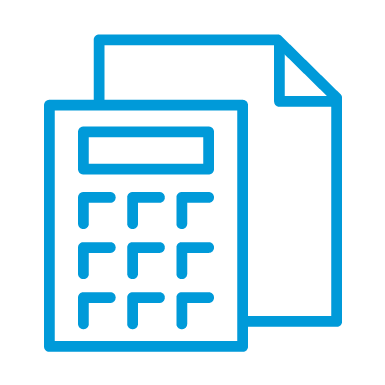Audit Focus: Auditing Accounting Estimates
This document was published in May 2025 and represents the views of PCAOB staff and not necessarily those of the Board. It is not a rule, policy, or statement of the Board.
PCAOB staff (“staff”) continues to identify deficiencies related to auditors’ testing of accounting estimates. This edition of Audit Focus highlights key reminders for auditors from the PCAOB standards related to auditing accounting estimates, provides the staff’s perspectives on common deficiencies in auditors’ work, and shares good practices that the staff has observed.
About the Audit Focus Series
Audit Focus is a series of PCAOB publications that aims to provide easy-to-digest information to auditors, especially those who audit smaller companies. Each edition of Audit Focus reiterates the applicable auditing standards, rules, and/or staff guidance, as well as offers reminders and good practices tailored to PCAOB-registered auditors of smaller companies – all with an eye toward protecting investors and improving audit quality.
Applicable PCAOB Rules, Standards, and Staff Guidance
Accounting estimates are an essential part of financial statements. Most companies’ financial statements reflect accounts or amounts in disclosures that require estimation. Accounting estimates are pervasive to financial statements, often substantially affecting a company's financial position and results of operations. Examples of accounting estimates include certain revenues from contracts with customers, valuations of financial and non-financial assets, impairments of long-lived assets, allowances for credit losses, and contingent liabilities.
By their nature, accounting estimates, including fair value measurements, generally involve subjective assumptions and measurement uncertainty, making them susceptible to management bias. Some estimates involve complex processes and methods. As a result, accounting estimates are often some of the areas of greatest risk in an audit, requiring additional audit attention and appropriate application of professional skepticism. The challenges of auditing estimates may be compounded by cognitive bias, which could lead auditors to anchor on management's estimates and inappropriately weigh confirmatory over contradictory evidence.
AS 2501, Auditing Accounting Estimates, Including Fair Value Measurements, allows for different approaches to testing of an accounting estimate. An auditor should use one or a combination of the following approaches:
- Testing the company’s process: This approach involves performing procedures to test and evaluate the methods, data, and assumptions used by the company in developing the estimate. The approach includes evaluating the reasonableness of significant assumptions and their consistency with other relevant information, when applicable (see AS 2501.09 -.20);
- Developing an independent expectation: This approach involves using some or all of the auditor’s own methods, data, and assumptions, to develop an independent expectation of an estimate to compare with the company’s estimate (see AS 2501.21 -.26); and
- Evaluating audit evidence from events or transactions: This approach involves assessing events or transactions that occur after the measurement date related to the accounting estimate for comparison to the company’s estimate (see AS 2501.27 -.29).
AS 2501 states that the auditor should evaluate the reasonableness of significant assumptions used by the company to develop estimates, both individually and in combination. This includes evaluating whether:
- The company has a reasonable basis for the significant assumptions used (see AS 2501.15), when applicable, for its selection of assumptions from the range of potential assumptions (see AS 2501.16a); and
- The significant assumptions are consistent with the following, when applicable (see AS 2501.16b):
- Relevant industry, regulatory, and other external factors, including economic conditions;
- The company’s objectives, strategies, and related business risks;
- Existing market conditions;
- Historical or recent experience, taking into account changes in conditions and events affecting the company; and
- Other significant assumptions used by the company in other estimates tested.
Note: If an auditor evaluates the reasonableness of a significant assumption by developing an expectation of that assumption, the auditor should have a reasonable basis for that expectation. AS 2501.A10 also provides additional requirements related to evaluating the reasonableness of unobserved inputs used in the valuation of financial instruments.
When a significant assumption is based on the company’s intent and ability to carry out a particular course of action, the auditor should consider the following factors to evaluate the reasonableness of the assumption, taking into account the company’s (AS 2501.17):
- Past history of carrying out its stated intentions;
- Written plans or other relevant documentation, such as budgets or minutes;
- Stated reasons for choosing a particular course of action; and
- Ability to carry out the particular course of action, which includes consideration of whether:
- The company has the financial resources and other means to carry out the action;
- Legal, regulatory, or contractual restrictions could affect the company’s ability to carry out the action; and
- The company’s plans require the actions of third parties and, if so, whether those parties are committed to the actions.
Common Deficiencies
When it comes to evaluating the reasonableness of significant assumptions in accounting estimates, the following are some of the most common deficiencies that the staff has observed on inspections of firms that audit smaller companies:

Did not evaluate the reasonableness of significant assumptions beyond vouching to external and internal data.

Did not identify the significant assumptions used by the company to determine an accounting estimate.

Did not perform procedures other than inquiry and/or reperforming the mathematical calculations to test the significant assumptions of an accounting estimate.

Did not evaluate whether the company’s methods are in conformity with the applicable financial reporting framework and are appropriate for the nature of the related accounting or disclosure.

Did not understand how management analyzed the sensitivity of critical accounting estimates based on other reasonably likely outcomes that would have a material effect on its financial condition or operating performance.
Reminders
Critical Accounting Estimates
Critical accounting estimates involve highly uncertain matters. These estimates materially impact the financial condition or operating performance of the company, increasing the level of subjectivity, judgment, and potential management bias involved in the development of these estimates. For critical accounting estimates, the auditor should understand how management analyzed the sensitivity of its significant assumption to change, based on other reasonably likely outcomes that would have a material effect on its financial condition or operating performance, and use that understanding when evaluating the reasonableness of the assumption and potential management bias (see AS 2501.18).
Developing an Independent Estimate
Developing an independent expectation of an accounting estimate involves the auditor using some or all of the auditor’s own methods, data, and assumptions to develop an expectation of the estimate for comparison with the company’s estimate. When developing an independent expectation, the auditor is required to take into account the requirements of the applicable financial reporting framework and the auditor’s understanding of the company’s process, including the significant assumptions used by the company, so that the auditor’s expectation considers the factors relevant to the estimate.
Use of Data
When an auditor uses their own assumptions or methods, they are required to have a reasonable basis for using those assumptions and methods. When using data and assumptions obtained from a third party, the auditor should evaluate the relevance and reliability of the data and assumptions obtained in accordance with AS 1105, Audit Evidence. The auditor may also choose to use a portion or a combination of data, significant assumptions, and methods produced by the company in developing the auditor’s own expectations (e.g., using the company’s method, but substituting his or her assumptions for those used by the company). The auditor is required to test such data or evaluate such significant assumptions or methods using the corresponding procedures in AS 2501 that apply when the auditor tests the company’s process.
Good Practices
We have observed the following good practices that audit firms that audit smaller companies have implemented in the area of accounting estimates:

Updated Guidance
Given that there are numerous types of accounting estimates throughout the standards (e.g. critical accounting estimates, estimates associated with significant risks) which are not necessarily captured by all accounting estimates required to be tested under AS 2501, some audit firms updated their internal guidance and work programs to ensure the audit firm’s testing of estimates includes an appropriate scoping exercise as it relates to identifying and testing accounting estimates in accordance with AS 2501.

Updated Policies and Procedures
Some audit firms revised their policies and procedures to require engagement teams to use their external audit methodology provider’s audit program for testing accounting estimates. The audit programs (1) include procedures for evaluating the reasonableness of significant assumptions, including external industry information used by the audit firm and (2) require both the engagement partner and engagement quality review (EQR) partner to review the estimates.

Updated Policy for Review
Some audit firms expanded the requirement for the EQR partner to review the completed testing accounting estimates audit program when used irrespective of whether a significant risk had been identified. One audit firm revised its partner review checklist to include a step for the engagement and EQR partners to validate that the engagement teams have tested all significant inputs for accounting estimates provided by company-engaged specialists.

Risk Assessment
Some audit firms have developed risk assessment procedures that were supported by an in-depth understanding of the company and its business and included clear, concise, and understandable documentation linking the risks identified to the audit response. For example, one firm assigned likely sources of potential misstatement to elements of an estimate or calculation.
Additional Resources
For more guidance, please visit the Staff Guidance page.
Stay Connected
Auditors and others can find more PCAOB resources and perspectives on our Information for Smaller Firms and Staff Publications pages. Sign up for targeted email updates through our Communications to Auditors and Communications to Small Audit Firm Practitioners mailing lists.

